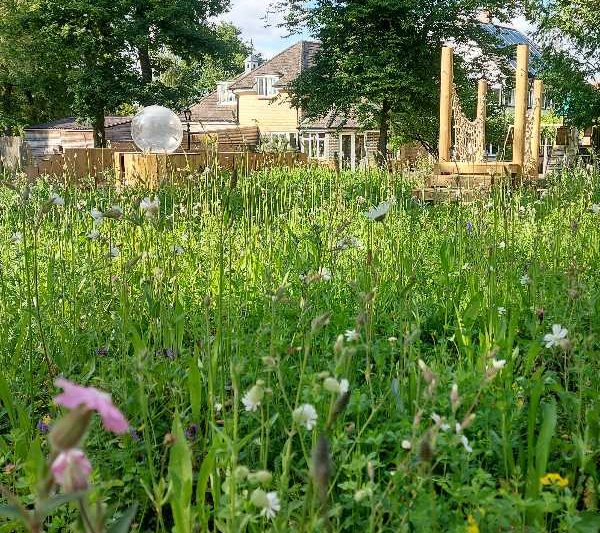- Turf
- Artificial
- Soil
- Timber
- Composite Decking
- Paving & Stone
Get In Touch With Our Experts Today!
Give us a Call! - Seed & Fertiliser
- Dressing
- Bark

April 09, 2024
Wildflower turf is an excellent choice for transforming your garden into a thriving habitat for various wildlife species while enhancing your garden landscape. With wildflower turf, you can effortlessly cultivate an eco-friendly environment, providing a sanctuary for bees, butterflies, and small mammals.
Unlike sowing wildflower seeds, which can be challenging to establish and may take considerable time, wildflower turf offers a convenient solution. Thriving in low-fertility conditions, it blooms year after year with minimal maintenance. By opting for a wildflower lawn, you not only create a stunning garden but also contribute to environmental conservation amid the decline of wildflower meadows across the UK.
Autumn is a great time to lay wildflower turf. This allows the turf to focus on growing strong roots instead of flowering. Come springtime, it’ll have everything it needs to fully bloom. Alternatively, you could lay your turf in early spring and within 4 weeks, your wildflowers will be flourishing.
You can lay wild flower turf throughout the year, as long as the ground is not frozen. Some pros and cons exist for planting in various seasons; however, we find autumn the best time. It provides the turf with plenty of time to fully root. The only downside is working in sodden ground, but you can incorporate this into general garden winter maintenance.
Planting wildflower turf in the spring is a good idea. The ground is dry and the weather is warm, making it easier to work outside. You should have plenty of access to water also. In Spring, you may need to spend extra time getting your area ready and removing any weeds that have grown.
Make sure you prepare the ground and then once laid, to maintain it we recommend trimming back meadow grass turf in the summer months. By cutting back the dead growth, it provides ample space for them to come back and bloom in the Spring. Some of our customers leave their wildflower turf to grow completely wild and transform their lawns into a wildflower meadow. Once you’ve laid your lawn turf the choice is down to you.
Wildflower turf installation is quick and easy. Our team has pulled together 3 steps to creating your own wildflower mini meadow:
Wildflower seeds and turf love the sun. So, look for a part of your garden which receives the most sunlight. Ideally somewhere quite open and not shaded by trees or structures. Also, consider where you want to view your wildflower patch. For instance, would you love to see it from your kitchen window, or would you prefer it by your outdoor seating area? Bear in mind, wildflowers are intended to attract bugs, bees and insects so if you’re a bit wary of these critters, it might be better to place your wildflowers further away.
The beauty of a wildflower garden is that it naturally requires minimal maintenance. So, if you want a complete wildflower lawn without the stress of mowing, you can. Any sized wildflower garden is great for the environment too, and the best bit is, even the smallest patch of wildflower turf can contain a large mix of seeds. Consider the size of your garden and start by sectioning off different parts to find the right size to complement the rest of your garden’s landscape.
Like all types of turf, the best way to get the most from your grass is in preparation! To prepare your soil, start by removing any existing turf and de-weed the area. Aerate the soil too, breaking up compacted areas and ensuring there’s sufficient drainage. Rake the soil to create an even surface and apply a loose layer of topsoil. You can then scatter your wildflower seeds or roll out your GDT wildflower turf . If it’s not raining, make sure you water thoroughly.
With an increase in industrial and residential developments, our natural wildflower meadows are rapidly diminishing. Destroying wildlife habitats and limiting pollination which impacts the diversity of fruits and flowers. As well as our countryside losing its natural floral beauty.
If we all start including a small wildflower area in our gardens, we’ll quickly grow numerous benefits for ourselves and the environment, such as:
CALL US NOW ON 01234 818 253